Sonoran Desert
The ecoregion’s land area is provided in units of 1,000 hectares. The conservation target is the Global Safety Net (GSN1) area for the given ecoregion. The protection level indicates the percentage of the GSN goal that is currently protected on a scale of 0-10. N/A means data is not available at this time.
Bioregion: Baja California & Southern Deserts (NA30)
Realm: Northern America
Ecoregion Size (1000 ha):
22,515
Ecoregion ID:
435
Conservation Target:
40%
Protection Level:
4
States: United States: AZ, CA. Mexico: Sonora, Baja California
When most North Americans think of the desert, they likely envision the giant saguaro cactus. The saguaro, a semitropical species, is mostly confined to the Sonoran Desert. It does not occur across the entire ecoregion, but rather only in Arizona and the state of Sonora, Mexico. In addition to portions of Arizona and Sonora, the Sonoran Desert occupies southeastern California (south of the Mojave Desert) and northeastern Baja California.
Besides the Mojave to the north, the Sonoran Desert is bounded on the west by the California Montane Chaparral and Woodlands and the California Coastal Sage Scrub and Chaparral, on the east by the Arizona Mountain Forests, Chihuahuan Desert, Sierra Madre Occidental Pine-Oak Forests, and Sonoran-Sinaloa Subtropical Dry Forest, and on the south by the latter ecoregion.
The Sonoran Desert is extremely complex biologically and was subdivided by the great desert ecologist Forrest Shreve into several relatively distinct regions based on vegetation.
The Sonoran is a subtropical desert with hot summers and mostly mild winters. Annual precipitation ranges from less than 100 mm to around 300 mm. The Lower Colorado River Valley is the largest subdivision, occupying all four states in which the Sonoran Desert is found.
In California, this subdivision is often called the Colorado Desert. Its dominant vegetation is quite similar to that of the Mojave—the rather monotonous creosote bush and white bursage community—but contains several plant species absent from the Mojave, including the blue palo verde, ocotillo, chuparosa, and ironwood. Particularly spectacular are the natural springs and palm oases, featuring California’s only native palm, the California fan palm.
One of the more intriguing plants is the small bonsai-like elephant tree, which has a rich golden, exfoliating bark and reddish-brown branch tips. Elephant tree is in the same genus as the tropical gumbo limbo tree, which ranges from South Florida to northern South America and has similar bark.
The Arizona Uplands subdivision to the east is a bit moister, resulting in higher species richness. Saguaro and an amazing diversity of other cacti are found here, including buckthorn cholla, cane cholla, jumping cholla, night-blooming cereus, desert Christmas cactus, barrel cactus, fishhook cactus, and organ pipe cactus. The ocotillo, which is spiny but not a cactus, is a distinctive plant that can grow to 10 m tall. Its brilliant red flowers are triggered by the first spring rains and attract hummingbirds and other pollinators.
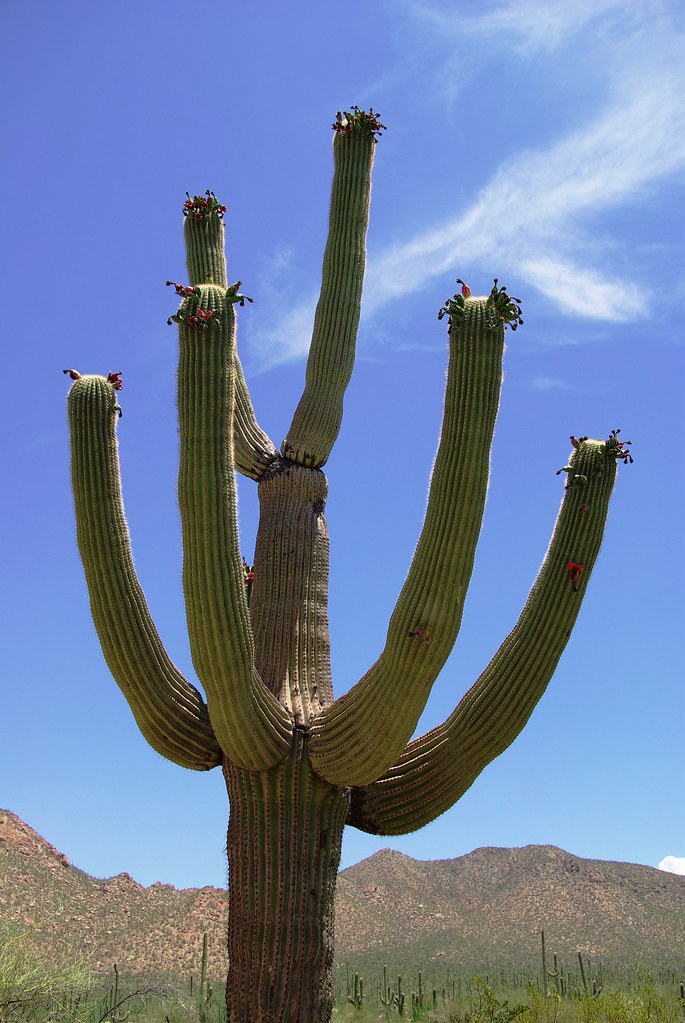
The flagship species of the Sonoran Desert ecoregion is the giant saguaro. Image credit: Creative Commons
The Sonoran Desert and the neighboring Chihuahuan Desert are the richest ecoregions in the U.S. and northern Mexico for birds, with some characteristic species including the cactus wren, black-tailed gnatcatcher, phainopepla, Gila woodpecker, Costa’s hummingbird, curve-billed thrasher, Abert’s towhee, black-throated sparrow, and roadrunner, as well as two species endemic or near-endemic to this ecoregion: the rufous-winged sparrow and the five-striped sparrow.
The impressive reptile fauna of approximately 60 species includes the federally Threatened desert tortoise, gila monster, chuckwalla, desert iguana, zebra-tailed lizard, Coachella Valley fringe-toed lizard, Sonoran spiny lizard, flat-tailed horned lizard, western leaf-nosed snake, desert patch-nosed snake, Sonoran gopher snake, desert glossy snake, Colorado shovel-nosed snake, speckled rattlesnake, and sidewinder.
Characteristic mammals include the endemic and Endangered Sonoran pronghorn, bighorn sheep, California leaf-nosed bat, ring-tailed cat, cougar, kit fox, coyote, black-tailed jackrabbit, desert kangaroo rat, Bailey’s pocket mouse, and round-tailed ground squirrel.
Although 17% of this ecoregion is protected and 37% of natural habitat remains outside protected areas, urban sprawl, particularly in California’s Coachella Valley and in the vicinity of Phoenix and Tucson, Arizona, is a serious threat, as are off-road vehicle use and exotic species invasions. Agriculture and cattle grazing are impacting many areas.
Priority conservation actions for the next decade are: 1) reduce urban sprawl and development of natural lands; 2) prohibit the use of off-road recreational vehicles on public land; 3) control invasive exotic plants, especially buffelgrass, which has invaded much of this ecoregion; and 4) enhance the recovery of large predators such as jaguar and the recently reintroduced Mexican wolf by maintaining and increasing habitat connectivity between the U.S. and Mexico.
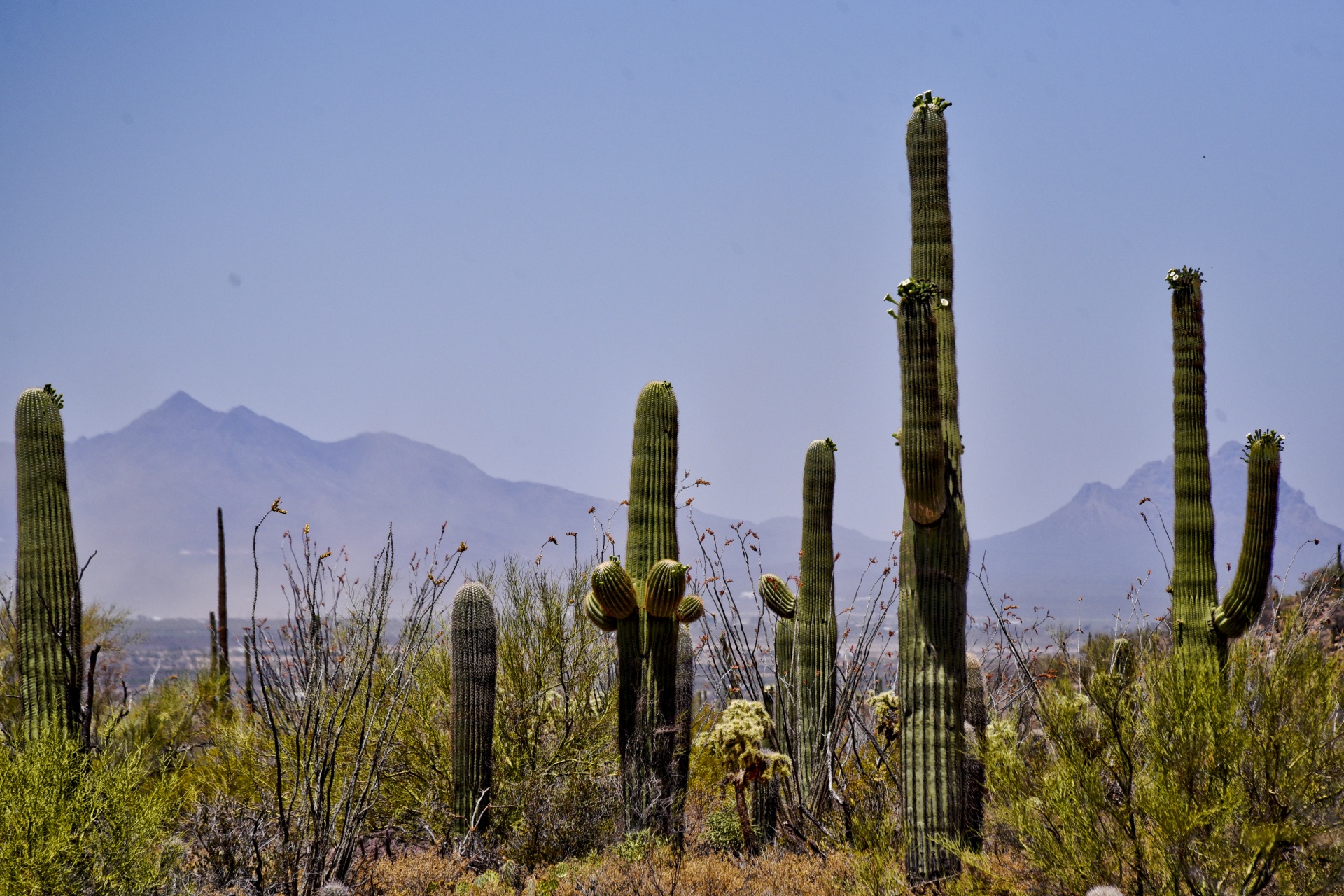
Giant saguaro. Image credit: Creative Commons
Citations
1. MacMahon, J.A. 2000. Warm deserts. Pages 285-322 in M.G. Barbour and W.D. Billings, eds. North American Terrestrial Vegetation, 2nd edition. Cambridge University Press, Cambridge, U.K.
2. MacMahon, J.A. 1997. Deserts. Alfred A. Knopf, New York.
3. Ricketts, T.H. et al. 1999. Terrestrial Ecoregions of North America: A Conservation Assessment. Island Press, Washington, D.C.
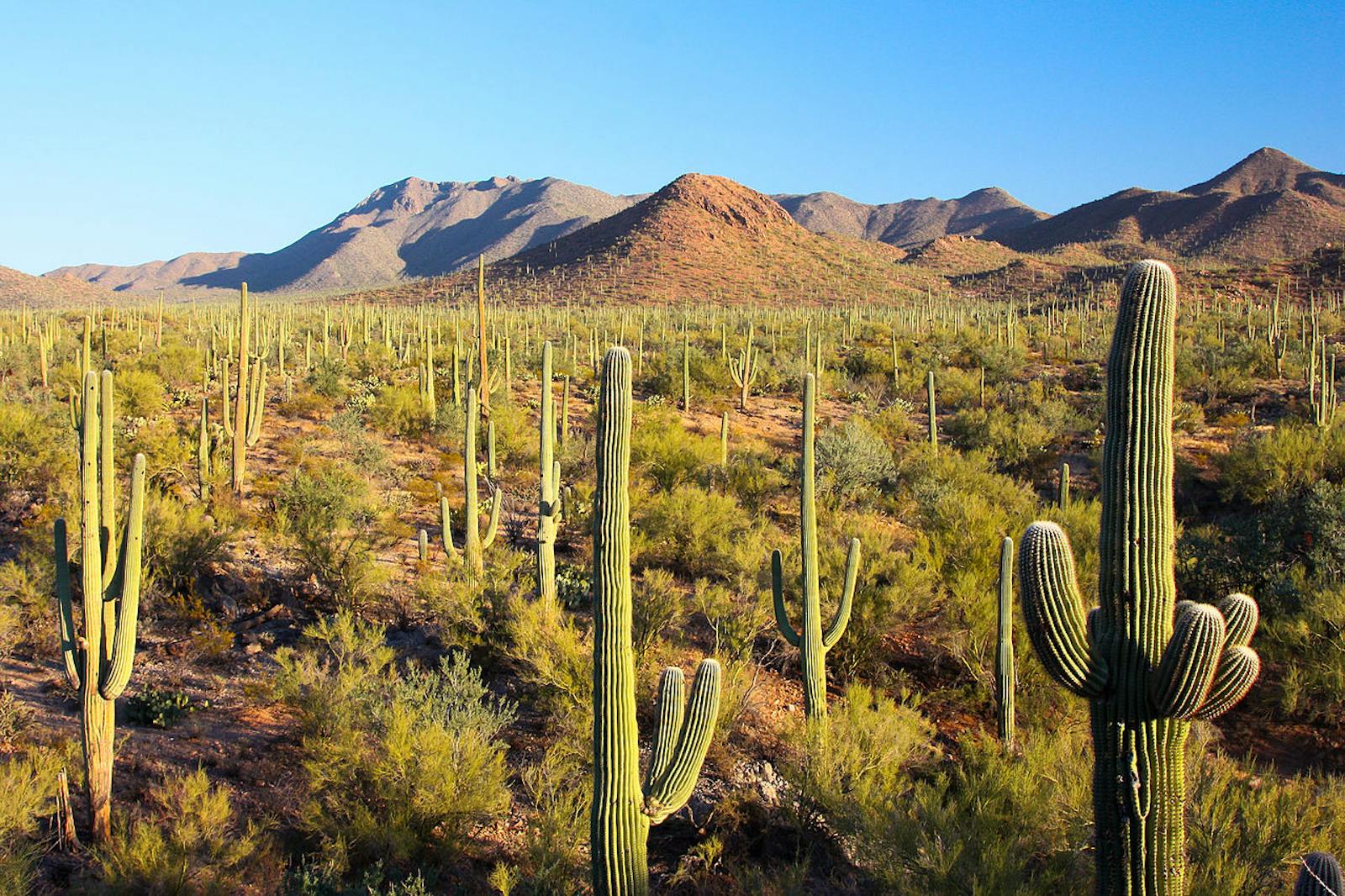
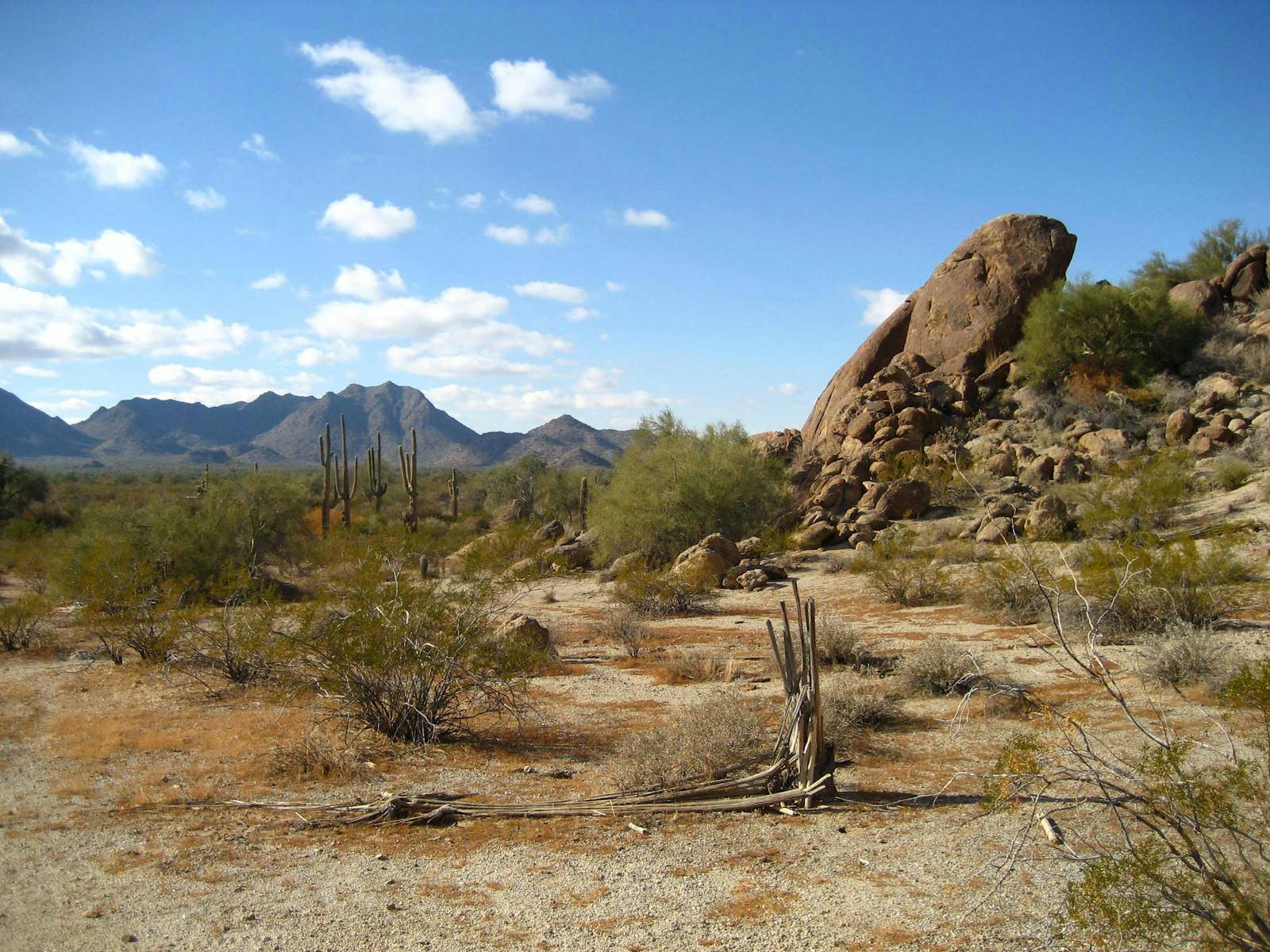
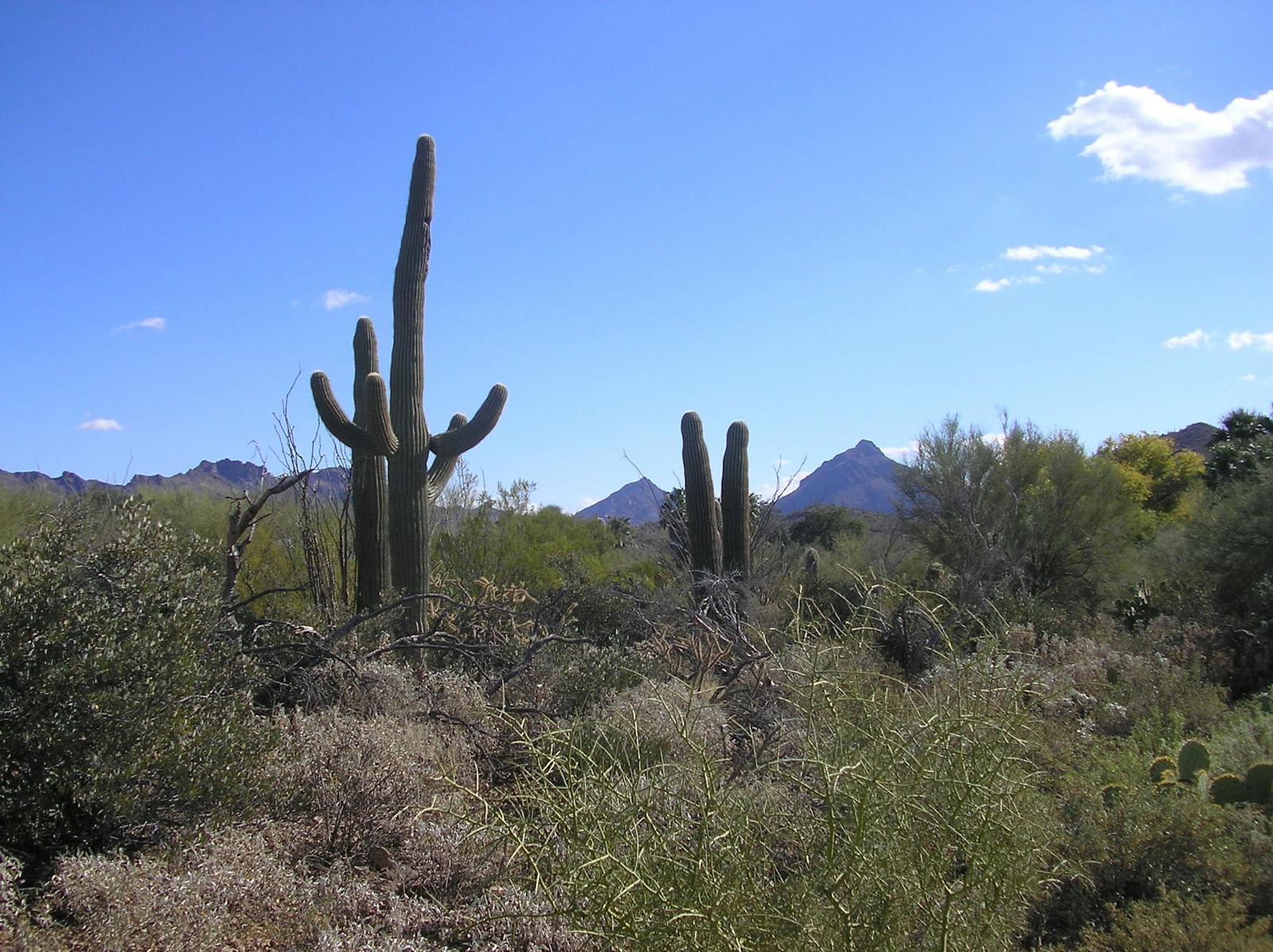
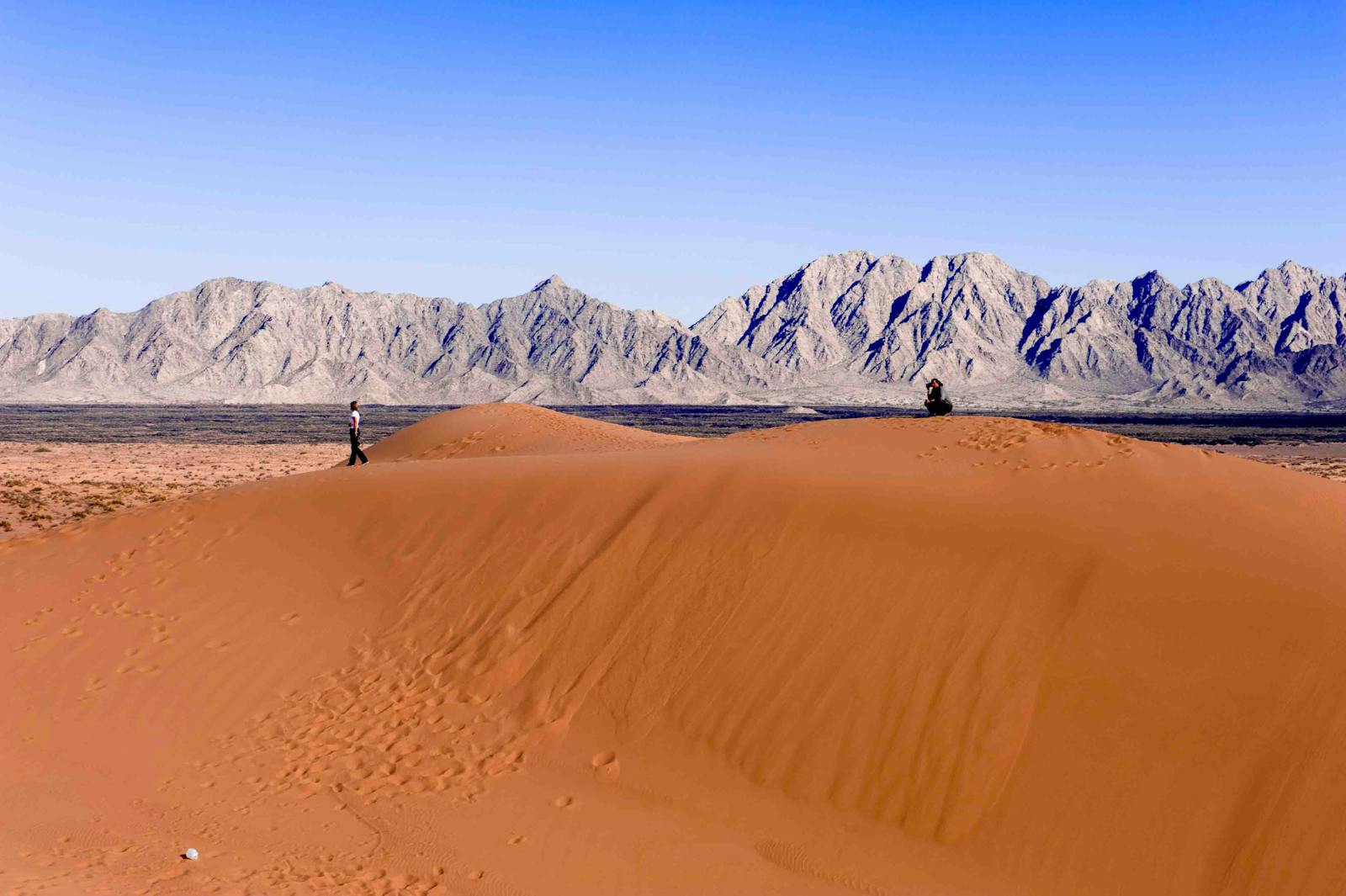
%20trees%20and%20fronds%20in%20Anza-Borrego%20Desert%20State%20Park%20(Palm%20Canyon)-CC-2013_resized.jpg?auto=compress%2Cformat&w=1600)


